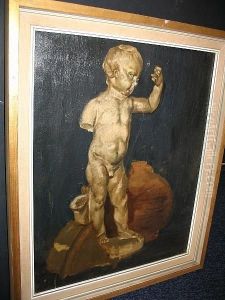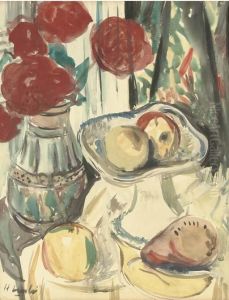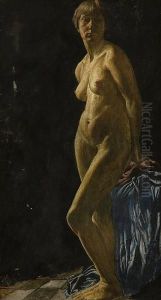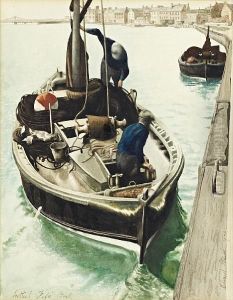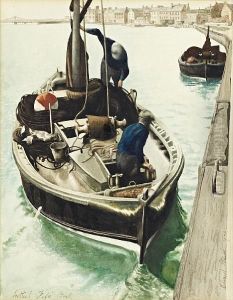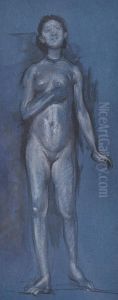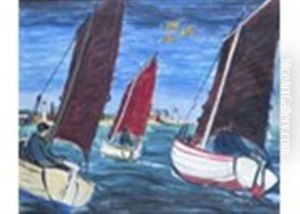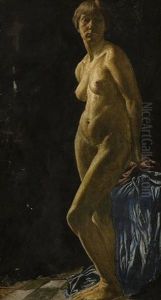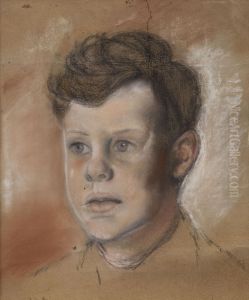Edward Baird Paintings
Edward Baird was a Scottish painter known for his distinctive contributions to the Scottish Renaissance—a cultural movement in the early 20th century that aimed to revive Scottish cultural life and identity. Baird was born on February 22, 1904, in Montrose, Angus, Scotland. He showed an early talent for art and would go on to study at the Edinburgh College of Art from 1922 to 1927, where he was awarded a traveling scholarship that took him to various parts of Europe, including France and Italy. His travels and exposure to different art forms influenced his style and approach to painting.
Baird's work is characterized by its meticulous attention to detail and a unique blend of realism and symbolism. In the 1930s, he became closely associated with the Scottish Renaissance movement through his friendships with other Scottish artists and intellectuals, such as Hugh MacDiarmid, who sought to create a new Scottish art form that drew from both traditional and modern elements.
Throughout his career, Baird focused on a variety of subjects, including landscapes, portraits, and still life compositions. One of his most notable works is 'The Birth of Venus' (1934), which showcases his precise technique and is laden with symbolic content. Despite his association with the Scottish Renaissance, Baird's output was relatively small, partly due to his painstaking method of painting and his perfectionist tendencies.
Baird's artistic career was cut short by his early death. He died on August 9, 1949, in Montrose, after suffering from ill health. His work has since been recognized for its contribution to Scottish art and is exhibited in various galleries, including the Scottish National Gallery of Modern Art. Baird left behind a legacy that continues to be appreciated for its clarity of vision and its embodiment of Scottish identity through visual art.
